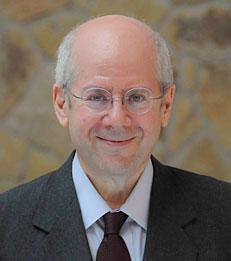Research Highlights
Improving US Monetary Policy Communications
—

The Federal Open Market Committee (FOMC), the Federal Reserve group that sets monetary policy for the United States, publishes a vast amount of information regarding its goals, strategy, outlook, and more. Over the past quarter century, the FOMC has developed a transparent communications framework that promotes accountability and allows for credible policy commitments. In a Federal Reserve-invited paper, NYU Stern Professor Kim Schoenholtz and co-author Stephen G. Cecchetti offer suggestions for further improving FOMC communications about monetary policy.
Having interviewed two dozen former policymakers, academics and market practitioners, the authors offer specific proposals for change. They describe their findings in “Improving US Monetary Policy Communications,” which was presented at the Federal Reserve’s Conference on Monetary Policy Strategy, Tools and Communication Practices on June 4, 2019. Three objectives guided their search for incremental reforms: namely, to simplify public statements; to clarify how policy will react to changing conditions; and to highlight uncertainty and risks. Applying these objectives to key communications tools, the authors propose a simpler post-meeting policy statement that could reach a broader audience, as well as the introduction of a concise Inflation Report.
The authors suggest that the FOMC speak where feasible with a common voice to limit uncertainty about policy plans, and identify ways to make this the norm for policy communications. For example, they write, “one useful practice is to encourage each [FOMC] participant to explain the decision of the Committee; supporting it if they agree, or explaining their dissent, if they do not.”
According to the authors, FOMC participants’ public comments should focus more on the rationale for recent decisions, on the prospect for key policy drivers and on the justification for dissent, and less on the likely future path of interest rates. Again, they add, “Unless there is Committee agreement, so that the message is coordinated and consistent, having 19 people provide their own version of forward guidance regarding policy rates is unhelpful.”
To clarify how policy will react to changing conditions, the authors suggest speeding current disclosure practices. They recommend the FOMC publish, as part of its post-meeting Summary of Economic Projections (SEP), the matrix that links the projections for growth, unemployment, inflation and interest rates for each FOMC participant (information that is now available after five years) and list the respondents by name (now provided with a 10-year lag).
To highlight policy uncertainty and risks, the authors recommend that the Committee speed the release of related materials that currently appear in the minutes three weeks after each meeting. They suggest displaying the confidence intervals for the members’ quarterly projections, along with their subjective assessments of risk and uncertainty, in a set of charts that would form the basis of a concise, easy-to-read Inflation Report, to be released immediately following the FOMC meeting.
The authors believe that a broad, systematic application of their three communications objectives will streamline and add further to the effectiveness of FOMC communications.
Having interviewed two dozen former policymakers, academics and market practitioners, the authors offer specific proposals for change. They describe their findings in “Improving US Monetary Policy Communications,” which was presented at the Federal Reserve’s Conference on Monetary Policy Strategy, Tools and Communication Practices on June 4, 2019. Three objectives guided their search for incremental reforms: namely, to simplify public statements; to clarify how policy will react to changing conditions; and to highlight uncertainty and risks. Applying these objectives to key communications tools, the authors propose a simpler post-meeting policy statement that could reach a broader audience, as well as the introduction of a concise Inflation Report.
The authors suggest that the FOMC speak where feasible with a common voice to limit uncertainty about policy plans, and identify ways to make this the norm for policy communications. For example, they write, “one useful practice is to encourage each [FOMC] participant to explain the decision of the Committee; supporting it if they agree, or explaining their dissent, if they do not.”
According to the authors, FOMC participants’ public comments should focus more on the rationale for recent decisions, on the prospect for key policy drivers and on the justification for dissent, and less on the likely future path of interest rates. Again, they add, “Unless there is Committee agreement, so that the message is coordinated and consistent, having 19 people provide their own version of forward guidance regarding policy rates is unhelpful.”
To clarify how policy will react to changing conditions, the authors suggest speeding current disclosure practices. They recommend the FOMC publish, as part of its post-meeting Summary of Economic Projections (SEP), the matrix that links the projections for growth, unemployment, inflation and interest rates for each FOMC participant (information that is now available after five years) and list the respondents by name (now provided with a 10-year lag).
To highlight policy uncertainty and risks, the authors recommend that the Committee speed the release of related materials that currently appear in the minutes three weeks after each meeting. They suggest displaying the confidence intervals for the members’ quarterly projections, along with their subjective assessments of risk and uncertainty, in a set of charts that would form the basis of a concise, easy-to-read Inflation Report, to be released immediately following the FOMC meeting.
The authors believe that a broad, systematic application of their three communications objectives will streamline and add further to the effectiveness of FOMC communications.
